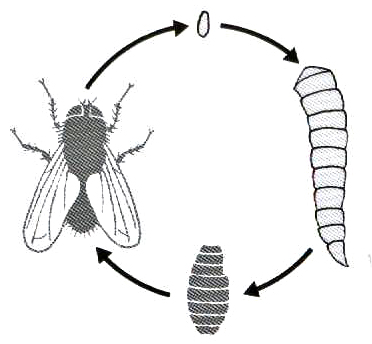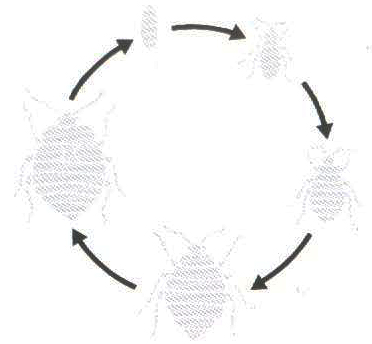Most arthropods lay eggs, but there are a few that produce live young. One of the disadvantages of having an external skeleton is that growth cannot proceed gradually, and so during their life arthropods have to moult a number of times, becoming a little larger each time.
Among the insects, development is associated with the process known as metamorphosis, which can take place in two different ways. In some insects, such as bed bugs and cockroaches, the newly hatched young look like miniature versions of the adults. They go through a number of stages, separated by a series of moults. This is known as incomplete metamorphosis.
Other insects, such as flies, beetles and butterflies, have complete metamorphosis, in which the young stages show no resemblance at all to the adults.
Here a special immobile stage, the pupa, occurs between the larva and the adult. When the adult insect emerges from the pupal stage it ceases to grow, so there is no truth in the idea that, for example, small flies can become large flies.






